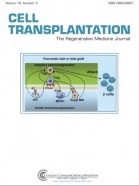Functionalizable silica-based MPIO for cellular MRI

Cellular therapies require methods for non-invasive visualization of transplanted cells. Micron-sized iron oxide particles (MPIOs) generate strong contrast in
Magnetic Resonance Imaging (MRI) and are therefore ideally suited as an intracellular contrast agent to image cells under clinical conditions. However,
MPIOs were previously not applicable for clinical use. Here, we present the development and evaluation of silica-based micron-sized iron oxide particles
(sMPIOs) with a functionalizable particle surface.
UPDATE: The paper is now available (Cell Transplant. 2013; 22(11): 1959-1570)